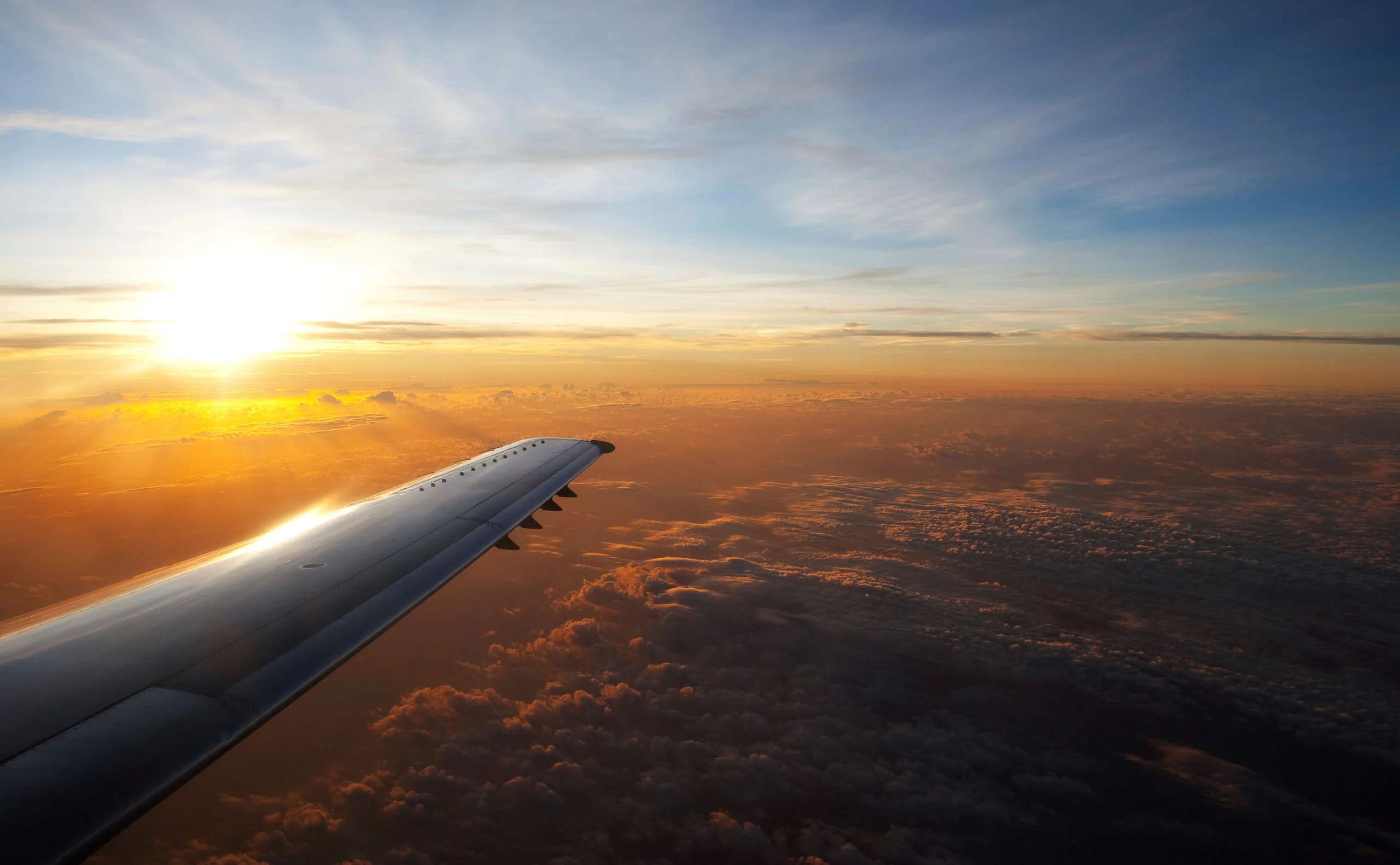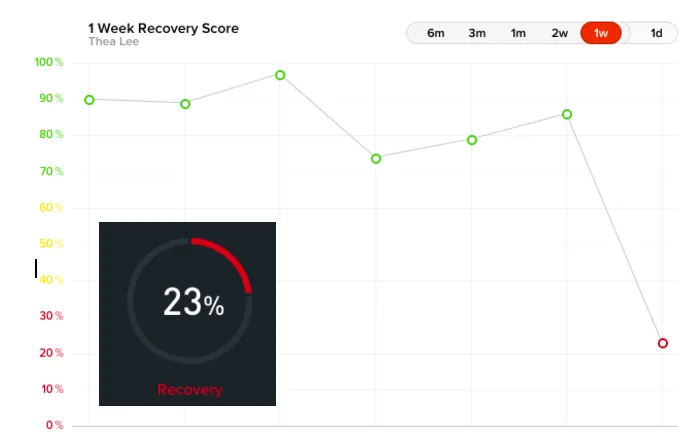Topics
- Article
What WHOOP Can Tell You About Flying a Red Eye

I’m a California kid living in Boston and, when it comes to the winter holidays, I plan my travel to eek out every possible minute soaking up the left coast weather. This invariably means taking a red eye back, “sleeping” on the plane, and going straight to work the next day. That was my play this past New Year’s holiday and I was feeling pretty smug with the decision after a full day with friends, strolling up to the airport at a respectable bedtime of 10pm. “Perfect,” I thought. I’ll sleep straight through and avoid the listlessness of a 6-hour flight.
Fast forward to touch down in Boston at 8 am. I felt like total garbage, I smelled like total garbage, and what was going on with my hair? Airport bathroom freshen-up session did about as much as you might think (read: nothing at all). The rest of the day progressed as pitifully as it started. I couldn’t focus on a thing, my stomach hurt, and my brain was foggy and inept. Let’s face it: I was pretty worthless.
That got me thinking, how the heck do flight attendants and pilots do it? Surely their schedules account for the toll it takes to travel regularly across time zones and sleep at odd hours?
I went to a family member who’s a flight attendant looking for some answers. What I found out was a bit shocking.
By contract, flight attendants are expected to fly numerous legs in a workday, many times upwards of 4 routes across the states. I’ve certainly seen the airlines offer discounted itineraries that have two or three layovers and balked at the idea. It never occurred to me that that scenario is commonplace for those staffing our flights. Imagine taking off and landing as many as 8 times in a day, and what toll that must take on the body?
That’s not the worst of it: contractually, a flight attendant will work up to 15 hours on domestic routes and a killer 18 hours on international routes. That must be few and far between, though, right?
My flight attendant friend said that when considering weather delays, mechanical failures, security questions, and any number of regular setbacks we all come to expect every time we fly, they clock 15-hour days on a frequent basis.
So surely, after a workday like that, the airline has to give them a day off to recoup before flying again, right? The answer is decidedly no. As written in the contractual agreements, a flight attendant is allotted 24 hours off after 7 consecutive days of flying, no sooner. And I thought I was wrecked after sitting on my butt doing nothing on my cross country flight home, never mind staying awake and alert to attend to the 100+ people on a plane!
But, then again, I’m not conditioned to flying professionally, so maybe with practice the human body adjusts to that schedule and those demands? When I asked my flight attendant informant if she feels like her work schedule allows her to get enough sleep, her response was a hearty laugh. “I caffeinate,” she said. “Four espressos in the morning when I get to the airport.” This is not a woman who’s new to the profession either–she’s been flying the friendly skies for 17 years.
In a physically demanding industry, where mental acuity is the cornerstone to ensuring safety, it seems essential to have in place robust, data-driven employee wellness policies. After all, the airlines are relying on their pilots, flight attendants, air traffic control officers, etc. to make the requisite judgment calls to safely deliver hundreds of planes, each often filled with hundreds of people, to their destinations globally. That’s a major responsibility, one that requires a high degree of fitness, mentally and emotionally, to carry out. It’s also one that seems impossible to do well when sleep deprived, as any person who’s taken a red eye and tried to work thereafter can empathize.

In fact, armed with WHOOP, I can tell you just how poorly recovered I was after traveling through 4 time zones and getting very little quality sleep. WHOOP Recovery is on a scale from 0-100%, where resting heart rate, heart rate variability, Sleep quality, and recent Strain are weighed to determine how primed your body is to perform. As you can see from my Recovery above, to say I was worn down would be an understatement. And, as demonstrated in the Recoveries from that week, a 23% is well below the average for me. Typically, if my Recovery is that low I’m on my way to getting sick or I’m hungover. (As an aside, for you people that claim you don’t get hungover I dare you to get WHOOP! There’s no hiding from that data.)
Now, though I like to think my job performance is important, in the grand scheme of things, my showing up to work poorly recovered isn’t a matter of life and death. But, it very well can be for an aviation professional. Which has me wondering: what would a pilot or flight attendant’s Recovery look like after a typical day at work? Over the holiday I shared my WHOOP app and data with my flight attendant family member and her head was spinning with all the applications she could envision for herself and her peers.
In an industry that demands vigilance with fitness, there is a profound lack of science dictating these professional’s schedules and work conditions. Imagine how powerful the WHOOP physiological insights would be in the hands of aviation professionals! It’s an investment in safety and employee wellness the airlines would be remiss to pass up.